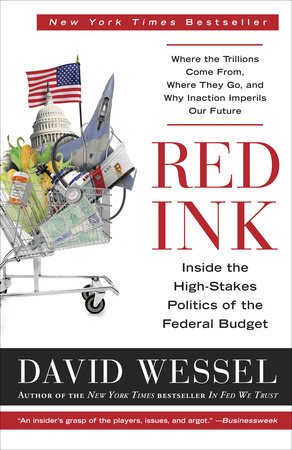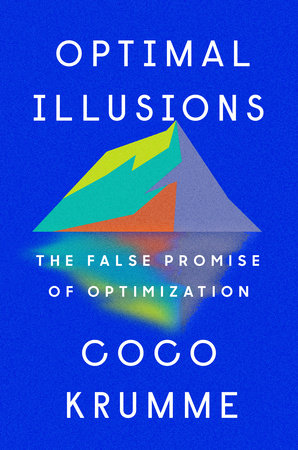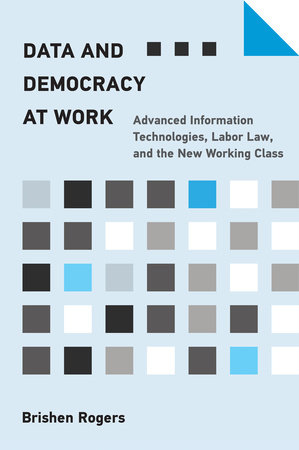Quick Summary
One Sentence Summary
“Red Ink” by David Wessel offers an insightful analysis of the U.S. federal budget, revealing how government spending and fiscal policies shape the nation’s economy and impact everyday citizens.
Big Idea
The big idea of “Red Ink” is to demystify the complex and often misunderstood world of the U.S. federal budget, breaking down its components and implications in an accessible manner.
Five Key Ideas
- Understanding the Budget: Wessel breaks down the components of the federal budget, explaining revenue sources, mandatory and discretionary spending.
- Deficit and Debt Dynamics: The book delves into the causes and consequences of the national debt and budget deficits, offering a historical perspective.
- Policy Implications: It highlights the impact of budgetary decisions on social programs, defense, and the broader economy.
- Political Landscape: The book discusses how political ideologies and bipartisan conflicts shape budgetary policies.
- Future Outlook: Wessel offers insights into the long-term consequences of current fiscal policies and suggests possible paths forward.
Actionable Advice
The book encourages readers to become informed citizens by understanding the budgetary process and its implications, advocating for greater fiscal responsibility and awareness.
About the Author
David Wessel is a renowned journalist and author, known for his expertise in economics and fiscal policy. He has a reputation for making complex economic concepts accessible to a broad audience.
Read Next
- “The Price of Inequality” by Joseph Stiglitz for a deeper dive into economic disparities and their roots in fiscal policy.
- “The Fifth Risk” by Michael Lewis for another perspective on governmental operations and fiscal management.
- “The Deficit Myth” by Stephanie Kelton for an alternative view on budget deficits and modern monetary theory.
In Depth
Understanding the Budget
David Wessel’s “Red Ink” is a masterclass in simplifying the complex machinery of the U.S. federal budget. Wessel meticulously dissects the budget, ensuring that readers grasp each component’s significance and interplay. He emphasizes that the federal budget is not just a collection of numbers but a reflection of the nation’s priorities and values.
Revenue Sources: The book starts by laying out where the money comes from. Wessel explains that the bulk of federal revenue is generated through individual income taxes and payroll taxes. He demystifies the tax code, highlighting its intricacies and the debates surrounding tax rates and brackets.
Mandatory vs. Discretionary Spending: A pivotal distinction in the federal budget is between mandatory and discretionary spending. Wessel clarifies that mandatory spending includes programs like Social Security, Medicare, and Medicaid, which are obligated by law. Discretionary spending, on the other hand, covers areas like defense, education, and transportation, and is determined annually by Congress.
Defense Spending: Wessel dedicates significant attention to defense spending, a substantial part of the discretionary budget. He delves into the debates on military spending, highlighting its impact on national security and the economy.
Social Programs: The book also scrutinizes spending on social programs. Wessel explains how these programs have evolved over time and how they aim to address societal needs like healthcare, poverty, and unemployment.
Balancing Act: Wessel illustrates the constant balancing act between revenue and expenditure. He explains the implications of budget deficits and the national debt, emphasizing their long-term impacts.
One detailed example from the book involves the discussion on Medicare. Wessel explains how Medicare, a mandatory spending item, is a significant portion of the federal budget. He explores the challenges in managing Medicare’s costs, given the rising healthcare expenses and an aging population. The example underscores the complexity of budget decisions and their far-reaching consequences.
In discussing these intricacies, Wessel states:
“The federal budget is both a financial document and a statement of priorities. It reflects not only our means but also our values.”
This quote encapsulates the essence of “Red Ink” — the federal budget is more than numbers; it’s a manifestation of the nation’s priorities and a tool that can shape its future. By understanding the budget, as Wessel adeptly guides the reader to do, one gains insight not just into government policy, but into the very values and priorities that guide the United States.
Deficit and Debt Dynamics
David Wessel tackles the often-misunderstood concepts of national debt and budget deficits in “Red Ink” with remarkable clarity. He explains how these elements are crucial indicators of the country’s fiscal health.
Deficit Basics: A budget deficit occurs when the government spends more than it earns. Wessel describes the factors leading to deficits, including economic downturns, tax cuts, and increased government spending.
National Debt: The national debt is the accumulation of these deficits over time. Wessel explains that while some level of debt is normal for a country, unsustainable debt levels can lead to economic problems.
Historical Perspective: The book provides a historical overview of U.S. debt and deficit levels. Wessel notes how these have fluctuated based on wars, economic crises, and policy decisions.
Economic Impact: Wessel dives into the impact of high debt and deficits on the economy. He discusses issues like interest rates, investor confidence, and the potential for crowding out private investment.
Policy Challenges: The author highlights the challenges policymakers face in balancing short-term economic needs with long-term fiscal responsibility. He talks about the tough choices in reducing deficits, such as cutting spending or raising taxes.
A detailed example Wessel uses is the 2008 financial crisis. He explains how the government’s response to the crisis led to a significant increase in the deficit. The stimulus spending and tax cuts aimed at reviving the economy widened the budget deficit but were deemed necessary to prevent a deeper recession.
In discussing the trade-offs in managing the deficit, Wessel states:
“Reducing the deficit too quickly can harm the economy, but ignoring it risks long-term fiscal instability.”
This quote underscores a central theme of “Red Ink” — finding the balance between immediate economic needs and long-term fiscal health. Wessel’s exploration of deficit and debt dynamics offers readers a nuanced understanding of these critical aspects of the federal budget.
Policy Implications
David Wessel, in “Red Ink,” adeptly highlights how budgetary decisions have far-reaching implications on various aspects of American life. He underscores that these policies don’t just move numbers around but profoundly affect people and the economy.
Social Programs: Wessel delves into how budget decisions impact social programs like healthcare, education, and welfare. He emphasizes the trade-offs involved in funding these programs versus other priorities.
Economic Growth: The book discusses how government spending and taxation policies influence economic growth. Wessel explains that while investment in infrastructure and education can spur growth, excessive debt can hinder it.
Income Inequality: Wessel touches on the role of the federal budget in addressing or exacerbating income inequality. Tax policies and spending priorities play crucial roles here.
National Security: The book doesn’t shy away from discussing the budget’s impact on national security. Wessel talks about the balance between defense spending and other needs.
Healthcare: One detailed example involves the Affordable Care Act (ACA). Wessel explains the budgetary implications of the ACA, detailing how it was funded and its impact on healthcare costs and coverage.
Wessel encapsulates the importance of understanding these policy implications in the following quote:
“Every line in the budget is a reflection of a choice, and each choice has winners and losers.”
This quote highlights a core idea in “Red Ink” — the federal budget is a mosaic of choices, each with significant consequences. Wessel’s exploration into policy implications offers a clearer view of how budgetary decisions shape the nation’s present and future.
Political Landscape
In “Red Ink,” David Wessel adeptly navigates the complex terrain of politics that underpins the U.S. federal budget. He illustrates how political ideologies and power struggles significantly influence fiscal policies.
Partisan Divides: Wessel delves into how differing ideologies between Democrats and Republicans shape budgetary decisions. He notes that these divides often lead to standoffs and compromises that impact the final budget.
Budget as a Political Tool: The book highlights how the budget is often used as a tool for political gain. Wessel discusses how parties leverage budget proposals to showcase their priorities and appeal to their bases.
Influence of Lobbying: Wessel sheds light on the impact of lobbying and special interest groups on budget allocations. He explains how these groups can sway spending towards certain areas.
Impact of Elections: The book examines how election cycles influence budget decisions, with politicians often avoiding tough decisions that might be unpopular.
One detailed example revolves around the 2011 United States debt-ceiling crisis. Wessel describes the political brinkmanship that led to the crisis, illustrating the impact of partisan politics on fiscal decisions. The standoff, driven by ideological differences over government spending and debt, brought the U.S. close to a default.
In discussing the political complexities of budget decisions, Wessel states:
“The budget is as much a product of political calculation as it is of economic necessity.”
This quote captures a critical aspect of “Red Ink” — the recognition that the federal budget is deeply entwined with the political landscape. Wessel’s insights into this aspect provide readers with a more profound understanding of the challenges and dynamics that shape the U.S. budget.
Future Outlook
David Wessel, in “Red Ink,” doesn’t just dissect the present; he casts an eye towards the future, offering insights into the long-term consequences of current fiscal policies and suggesting possible paths forward.
Sustainability of Debt: Wessel explores the sustainability of the national debt, questioning how long the U.S. can continue borrowing at current rates. He warns of the potential risks of unchecked debt growth.
Demographic Challenges: The book addresses the impact of an aging population on government spending, especially on social security and healthcare. Wessel notes the need for forward-thinking policies to tackle these impending challenges.
Technological Changes: Wessel touches on how technological advancements might impact the economy and, by extension, the federal budget. He speculates on the potential for both job creation and job loss.
Climate Change: The book doesn’t shy away from discussing the fiscal implications of climate change. Wessel talks about the potential costs of mitigation and adaptation, and the role of government spending in addressing this global issue.
A detailed example from the book involves the projected growth of healthcare costs. Wessel explains that as the population ages and healthcare costs continue to rise, Medicare and Medicaid expenditures will likely grow significantly. This growth poses a substantial challenge for future budgets and requires careful planning and policy adjustments.
In considering these future challenges, Wessel states:
“The decisions we make or fail to make today will shape the economic landscape for the next generation.”
This quote emphasizes a key message in “Red Ink” — the decisions made in the federal budget have long-term ramifications. Wessel’s exploration of the future outlook encourages readers to think about the legacy of today’s fiscal policies and the need for prudent, forward-looking decisions.
Actionable Advice
- Stay Informed: Regularly read about federal budget updates and understand where your tax dollars go.
- Educate Yourself: Learn about fiscal policies, deficits, and national debt to grasp their impact.
- Engage Politically: Vote for representatives who prioritize fiscal responsibility and transparency.
- Support Reforms: Advocate for budget reforms that ensure long-term economic stability.
- Participate in Dialogues: Join discussions and debates about fiscal policy to shape informed opinions.
- Promote Accountability: Demand accountability from elected officials regarding budget decisions.
- Spread Awareness: Share your knowledge about the federal budget with friends and family.
About the Author
David Wessel is a distinguished journalist and author, known for his expertise in economics and fiscal policy. He spent over 30 years at The Wall Street Journal, where he was a deputy bureau chief and wrote the “Capital” column. Wessel is the recipient of two Pulitzer Prizes, showcasing his excellence in journalistic endeavors. Beyond journalism, he has authored several books, including “In Fed We Trust” and “Red Ink,” which reflect his deep understanding of economic issues. Wessel’s work is marked by an ability to simplify complex economic concepts for the lay reader. He believes in informed public discourse and advocates for transparent government policies. Currently, he is the director of the Hutchins Center on Fiscal and Monetary Policy at the Brookings Institution, contributing to policy discussions and research. His insights continue to influence public understanding and policy debates around fiscal matters.
Read These Next
You might like these similar books
- “The Price of Inequality” by Joseph E. Stiglitz
- “The Deficit Myth” by Stephanie Kelton
- “This Time Is Different” by Carmen Reinhart and Kenneth Rogoff
- “The Great Deformation” by David Stockman
- “The Big Short” by Michael Lewis
FAQ
Q: What is “Red Ink” about?
A: “Red Ink” explores the U.S. federal budget, deficits, and national debt, explaining their implications for the economy and society.
Q: Who wrote “Red Ink”?
A: David Wessel, a journalist and economic expert, is the author of “Red Ink.”
Q: Is “Red Ink” suitable for readers without an economics background?
A: Yes, Wessel writes in a way that makes complex economic topics accessible to all readers.
Q: Does “Red Ink” offer solutions to the U.S. debt problem?
A: The book provides insights and perspectives rather than specific solutions, encouraging informed discussions about fiscal policy.
Q: How current is the information in “Red Ink”?
A: While some data may have changed since publication, the book’s fundamental principles and analyses remain relevant.
Q: Can “Red Ink” help in understanding current economic issues?
A: Absolutely. It offers a foundational understanding of fiscal policies that are applicable to ongoing economic discussions.







